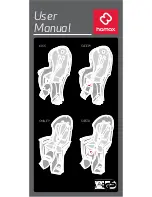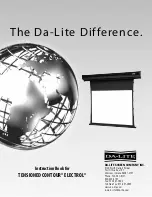
6
www.barryvox.com
2.
The Basics of
Avalanche Awareness
We would like to provide you with some ba-
sic information about this complex subject.
We recommend that you take a course
and continuously update your knowledge
by further training.
The snow slab: a primed trap
Most winter recreationalists involved in an
avalanche accident have triggered the aval-
anche themselves due to the additional load
that they imposed on the snowpack.
The
snowpack
is
fragile
.
Snow on a steep slope is like a primed trap.
If you touch the trigger, the trap snaps shut.
Remember that a small snow slab of 100 m
3
weighs approximately 25 tons!
2.1 Recognizing Danger
Particularly Critical Weather Situations
The risk of avalanches rises abruptly after
a
snowfall
accompanied by
stormy winds
and
low temperatures
. Slopes which have
been loaded by
snow drift
(= snow driven
by the wind) are particularly dangerous!
Drifting snow may also accumulate during
windy periods after a snowfall, in very clear
weather.
The first fine day after a period of snow-
fall is particularly dangerous.
Most accidents occur when, after a period
of several weeks of fine, cold weather, a cold
front with stormy winds brings the fresh
snow which everybody has been waiting for!
With these types of weather conditions,
10–20 cm of fresh snow
may be sufficient
to create a
critical situation
, which can
last for several days.
The risk of avalanches can also increase rap-
idly with
a sudden and strong rise in
temperature
(warm winds, rain). With sub-
sequent cooling, the risk will be reduced
again.
With an irregular and thin snowpack, the
risk is extremely hard to recognize. This
is often the case in early winter or during
periods of low precipitation.
In spring, when the snow has undergone
considerable metamorphosis, as a rule the
risk increases in parallel to the passage
of the day: e.g. from
LOW
(early in the
morning after a clear night) to
CONSIDER-
ABLE
in the afternoon.
T H E B A S I C S O F
A V A L A N C H E A W A R E N E S S
The first fine day after
a period of snowfall is
particularly dangerous.
Most winter recreation-
alists are caught in
slab avalanches that
they have triggered with their
own additional load.
The risk of avalanches
rises abruptly after
a snowfall accompanied
by stormy winds and
low temperatures.







































